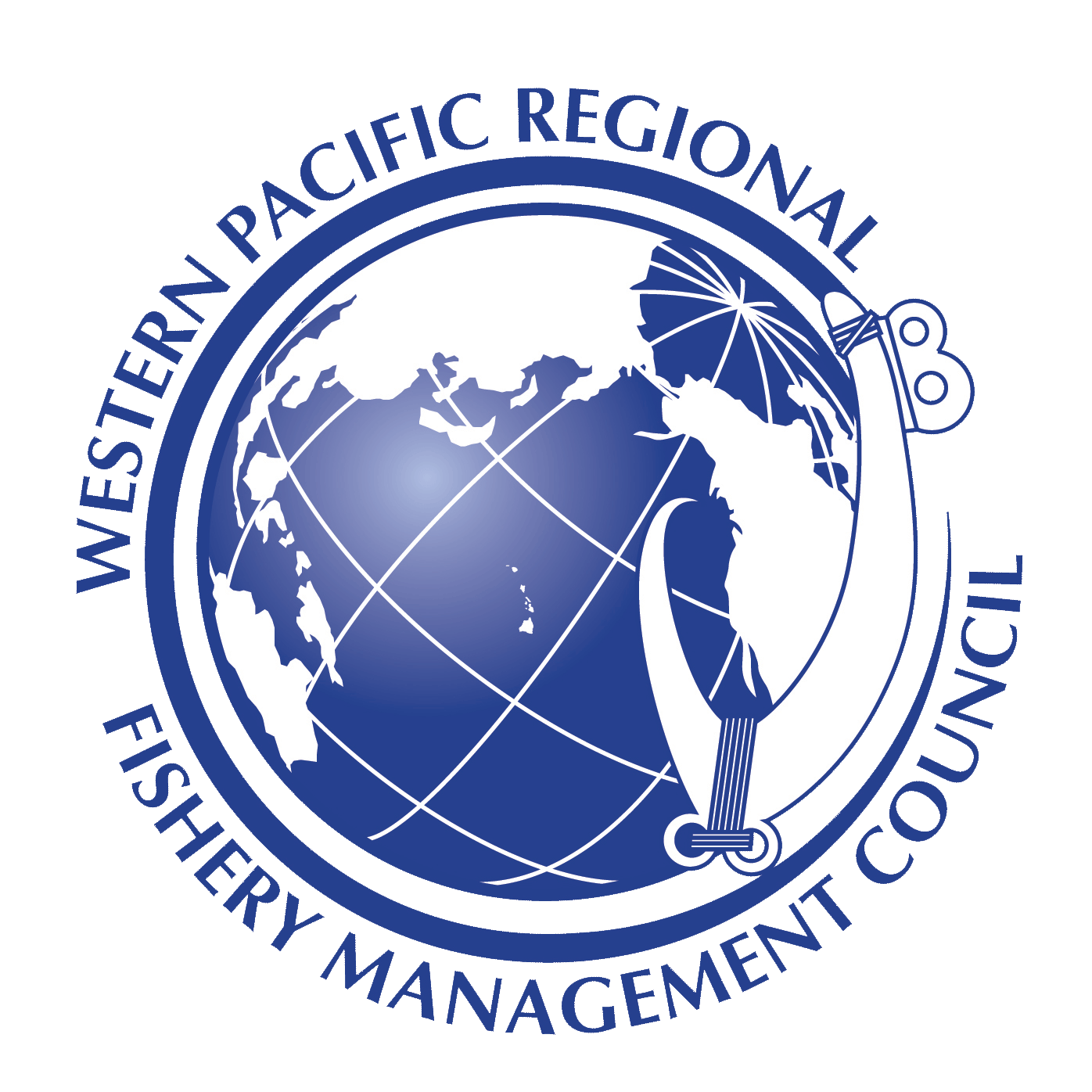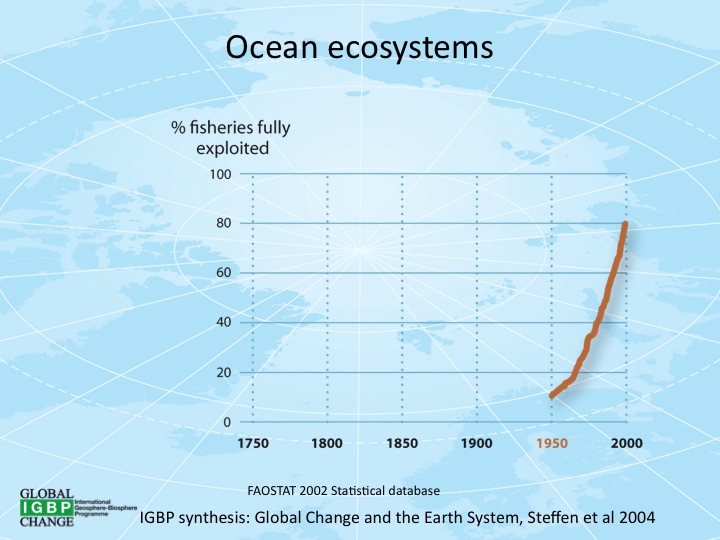|
Western Pacific Regional Fishery Management Council
The Western Pacific Regional Fishery Management Council (WPRFMC) is one of eight regional councils established under the Magnuson-Stevens Fishery Conservation and Management Act (MSA) in 1976 to manage offshore fisheries. The WPRFMC's jurisdiction includes the US exclusive economic zone (EEZ) waters (generally 3–200 miles offshore) around the State of Hawaii; US Territories of American Samoa and Guam; the Commonwealth of the Northern Mariana Islands (CNMI); and the US Pacific remote island areas of Johnston, Midway, Palmyra and Wake Atolls; Baker, Howland and Jarvis Islands; and Kingman Reef. This area of nearly 1.5 million square miles is the size of the continental United States and constitutes about half of the entire US EEZ. It spans both sides of the equator and both sides of the dateline. The WPRFMC also manages domestic fisheries based in the US Pacific Islands that operate on the high seas. The council is based in Honolulu, Hawaii. Achievements * In 1983, thru the Pr ... [...More Info...] [...Related Items...] OR: [Wikipedia] [Google] [Baidu] |
Pacific Regional Environment Programme
The Secretariat of the Pacific Regional Environment Programme (SPREP) is an intergovernmental organisation based in Apia, Samoa with more than 90 staff members. The organisation is held accountable by the governments and administrations of the Pacific region to ensure the protection and sustainable development of the region's natural resources. The organisation actively promotes the understanding of the connection between Pacific island people and their natural environment and the impact that these have on their sustenance and livelihoods. The organisation was established in 1982. Previously South Pacific Regional Environment Programme, the word "South" was replaced with "Secretariat" in 2004, in recognition of the members north of the equator. The French equivalent name is ''Programme régional océanien de l’environnement'' (PROE). Members SPREP Members comprise 21 Pacific island countries and territories, and five developed countries* with direct interests in the region: Co ... [...More Info...] [...Related Items...] OR: [Wikipedia] [Google] [Baidu] |
Fisheries Conservation Organizations
Fishery can mean either the enterprise of raising or harvesting fish and other aquatic life; or more commonly, the site where such enterprise takes place ( a.k.a. fishing ground). Commercial fisheries include wild fisheries and fish farms, both in freshwater waterbodies (about 10% of all catch) and the oceans (about 90%). About 500 million people worldwide are economically dependent on fisheries. 171 million tonnes of fish were produced in 2016, but overfishing is an increasing problem — causing declines in some populations. Because of their economic and social importance, fisheries are governed by complex fisheries management practices and legal regimes that vary widely across countries. Historically, fisheries were treated with a " first-come, first-served " approach, but recent threats by human overfishing and environmental issues have required increased regulation of fisheries to prevent conflict and increase profitable economic activity on the fishery. Modern jurisdictio ... [...More Info...] [...Related Items...] OR: [Wikipedia] [Google] [Baidu] |
Nature Conservation Organizations Based In The United States
Nature, in the broadest sense, is the physical world or universe. "Nature" can refer to the phenomena of the physical world, and also to life in general. The study of nature is a large, if not the only, part of science. Although humans are part of nature, human activity is often understood as a separate category from other natural phenomena. The word ''nature'' is borrowed from the Old French ''nature'' and is derived from the Latin word ''natura'', or "essential qualities, innate disposition", and in ancient times, literally meant "birth". In ancient philosophy, ''natura'' is mostly used as the Latin translation of the Greek word ''physis'' (φύσις), which originally related to the intrinsic characteristics of plants, animals, and other features of the world to develop of their own accord. The concept of nature as a whole, the physical universe, is one of several expansions of the original notion; it began with certain core applications of the word φύσις by pre-Socr ... [...More Info...] [...Related Items...] OR: [Wikipedia] [Google] [Baidu] |
Fisheries Agencies
Fishery can mean either the enterprise of raising or harvesting fish and other aquatic life; or more commonly, the site where such enterprise takes place ( a.k.a. fishing ground). Commercial fisheries include wild fisheries and fish farms, both in freshwater waterbodies (about 10% of all catch) and the oceans (about 90%). About 500 million people worldwide are economically dependent on fisheries. 171 million tonnes of fish were produced in 2016, but overfishing is an increasing problem — causing declines in some populations. Because of their economic and social importance, fisheries are governed by complex fisheries management practices and legal regimes that vary widely across countries. Historically, fisheries were treated with a " first-come, first-served " approach, but recent threats by human overfishing and environmental issues have required increased regulation of fisheries to prevent conflict and increase profitable economic activity on the fishery. Modern jurisdict ... [...More Info...] [...Related Items...] OR: [Wikipedia] [Google] [Baidu] |
North Pacific Fishery Management Council
The North Pacific Fishery Management Council (NPFMC) is one of eight regional councils established by the Magnuson–Stevens Fishery Conservation and Management Act in 1976 to manage the fisheries of the United States. With jurisdiction over the Exclusive Economic Zone (EEZ) off Alaska, the Council has primary responsibility for groundfish management in the Gulf of Alaska, Bering Sea and Aleutian Islands, including cod, pollock, flatfish, mackerel, sablefish, and rockfish species. Other large Alaska fisheries such as salmon, crab and herring are managed primarily by the State of Alaska. Community Development Program Quotas The Western Alaska Community Development Quota (CDQ) Program was created by the Council in 1992 to provide western Alaska communities an opportunity to participate in the Bering Sea and Aleutian Islands (BSAI) fisheries that had been foreclosed to them because of the high capital investment needed to enter the fishery. The purpose of the CDQ Program is to: *to pr ... [...More Info...] [...Related Items...] OR: [Wikipedia] [Google] [Baidu] |
Fisheries Management
The goal of fisheries management is to produce sustainable biological, environmental and socioeconomic benefits from renewable aquatic resources. Wild fisheries are classified as renewable when the organisms of interest (e.g., fish, shellfish, amphibians, reptiles and marine mammals) produce an annual biological surplus that with judicious management can be harvested without reducing future productivity. Fishery management employs activities that protect fishery resources so sustainable exploitation is possible, drawing on fisheries science and possibly including the precautionary principle. Modern fisheries management is often referred to as a governmental system of appropriate environmental management rules based on defined objectives and a mix of management means to implement the rules, which are put in place by a system of monitoring control and surveillance. A popular approach is the ecosystem approach to fisheries management. According to the Food and Agriculture Organi ... [...More Info...] [...Related Items...] OR: [Wikipedia] [Google] [Baidu] |
United States Fish And Wildlife Service
The United States Fish and Wildlife Service (USFWS or FWS) is an agency within the United States Department of the Interior dedicated to the management of fish, wildlife, and natural habitats. The mission of the agency is "working with others to conserve, protect, and enhance fish, wildlife, plants and their habitats for the continuing benefit of the American people." Among the responsibilities of the USFWS are enforcing federal wildlife laws; protecting endangered species; managing migratory birds; restoring nationally significant fisheries; conserving and restoring wildlife habitats, such as wetlands; helping foreign governments in international conservation efforts; and distributing money to fish and wildlife agencies of U.S. states through the Wildlife Sport Fish and Restoration Program. The vast majority of fish and wildlife habitats are on U.S. state, state or private land not controlled by the United States government. Therefore, the USFWS works closely with private g ... [...More Info...] [...Related Items...] OR: [Wikipedia] [Google] [Baidu] |
United States Department Of State
The United States Department of State (DOS), or State Department, is an executive department of the U.S. federal government responsible for the country's foreign policy and relations. Equivalent to the ministry of foreign affairs of other nations, its primary duties are advising the U.S. president on international relations, administering diplomatic missions, negotiating international treaties and agreements, and representing the United States at the United Nations conference. Established in 1789 as the first administrative arm of the U.S. executive branch, the State Department is considered among the most powerful and prestigious executive agencies. It is headed by the secretary of state, who reports directly to the U.S. president and is a member of the Cabinet. Analogous to a foreign minister, the secretary of state serves as the federal government's chief diplomat and representative abroad, and is the first Cabinet official in the order of precedence and in the pres ... [...More Info...] [...Related Items...] OR: [Wikipedia] [Google] [Baidu] |
National Marine Fisheries Service
The National Marine Fisheries Service (NMFS), informally known as NOAA Fisheries, is a United States federal agency within the U.S. Department of Commerce's National Oceanic and Atmospheric Administration (NOAA) that is responsible for the stewardship of U.S. national marine resources. It conserves and manages fisheries to promote sustainability and prevent lost economic potential associated with overfishing, declining species, and degraded habitats. History Founded in 1871 as the U.S. Commission of Fish and Fisheries, the National Marine Fisheries Service is the oldest federal conservation and environmental research agency in the United States. The commission was formed when President Ulysses S. Grant named zoologist Spencer Fullerton Baird, United States National Museum director and assistant secretary of the Smithsonian Institution, the first commissioner of the United States Fish Commission. The commission was divided into three research categories: the study of U.S. wate ... [...More Info...] [...Related Items...] OR: [Wikipedia] [Google] [Baidu] |
Hawaii Department Of Land And Natural Resources
The Hawaii Department of Land and Natural Resources (DLNR) is a part of the Government of Hawaii, Hawaii state government dedicated to managing, administering, and exercising control over public lands, water resources and streams, ocean waters, coastal areas, minerals, and other natural resources of the State of Hawaii, Hawaiʻi. The mission of the Hawaiʻi Department of Land and Natural Resources is to "enhance, protect, conserve and manage Hawaiʻi's unique and limited natural, cultural and historic resources held in public trust for current and future generations of the people of Hawaiʻi nei, and its visitors, in partnership with others from the public and private sectors." The organization oversees over 1.3 million acres of land, beaches, and coastal waters and 750 miles of coastal land. The DLNR is established in the Hawaiʻi Revised Statutes §26-15 and establishes the Board of Land Natural Resources as the governing entity. [...More Info...] [...Related Items...] OR: [Wikipedia] [Google] [Baidu] |
Guam Department Of Agriculture
The Guam Department of Agriculture is a government agency in the United States territory of Guam. Its headquarters are in the village Mangilao Mangilao is a village on the eastern shore of the United States territory of Guam. The village's population has decreased slightly since the island's 2010 census. Cliffs lie along much of the village's shoreline provide dramatic views, including .... ." Guam Department of Agriculture. Retrieved on October 21, 2010. References External links Guam Department of Agriculture Government of Guam [...More Info...] [...Related Items...] OR: [Wikipedia] [Google] [Baidu] |


.jpg)



